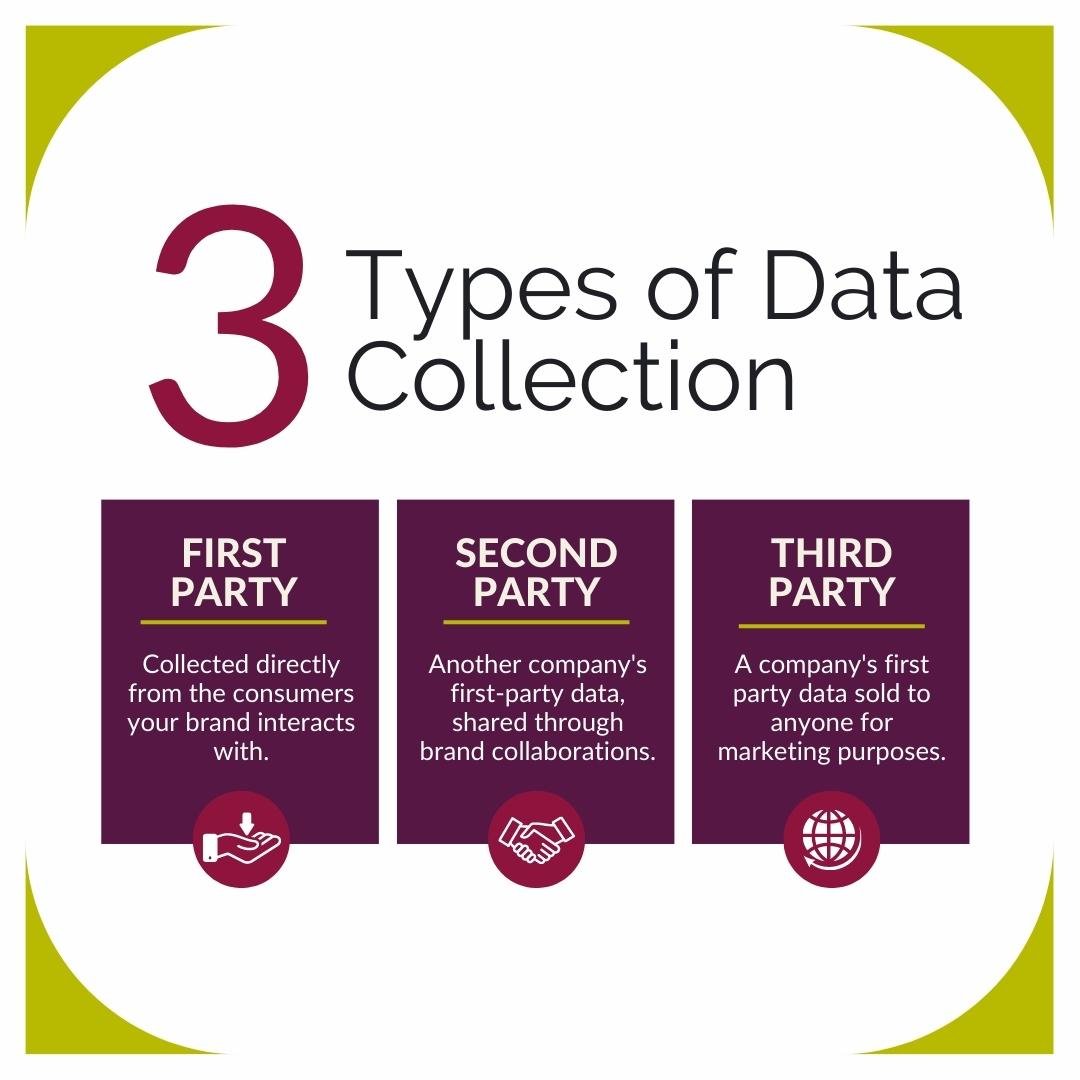How to Use Data to Connect with Your Audience
16 MIN READ
Forget a “new normal.” Marketing is in pieces.
Riding on the heels of data privacy legislation and violation, the pandemic, coupled with the questionable practices of many social media platforms, ushered in one of the most demanding eras for marketers. And with the Direct-to-Consumer (DTC) trend that saw a massive explosion during COVID now cooling, we must once again completely reimagine the customer journey and how consumers move from consideration to conversion.
That reimagination is not a wholly unique version of marketing that will transcend time and space, rewriting every business book [online PDF], but instead, it will act as the coming to life of a concept that was once thought unattainable due a lack of essential data.
That concept? Me-commerce.
What is Me-Commerce?
Me-commerce puts the consumer at the center of the brand experience. An even half-hearted Google search shows that publications have been heralding the imminent implementation of Me-commerce for years—this includes a Forbes piece in 2012, an Entrepreneur article in 2014, and a 2022 analysis in Consumer Goods Technology (with a wonderful, hilarious introduction). If you look long enough, you can find an article for every year. All of which usher in this groundbreaking, new way of thinking.
Well, marketers have been clamoring for more personalization and segmentation for quite a while. Quizzes, polls, guided consumer experiences—these have been in our toolkits since the very beginning. They’ve been rolled out on cue whenever we need more insights. And we feel confident in speaking for other marketers when we say that it’s often been a fight to include CTAs other than “Buy Now” or “Shop Here” in association with those consumer guided experiences.
You see, the royal “we” realized early on that those experiences lead to such a boost in metrics because it put the choice in our customers’ hands. It gave them more agency over their purchase decisions.
What has changed is that more of the C-Suite is beginning to recognize that Me-commerce is indeed critical to marketing success. Being highly focused on the consumer experience drives sales, increases brand loyalty, and helps companies weather recessions. As the years (and technology) progress, the demands on our attention and time will only continue to increase. If consumers are going to spend their valuable time engaging with a brand, they want to be damn sure that they are receiving something of value in return.
But how do we craft consumer experiences that will resonate? And how do we find where our consumers are in order to deliver these experiences?
Connect-to-Consumer
In that same Wired piece we referenced at the beginning of this blog, Shimona Mehta of Shopify described her vision of DTC’s transition to CTC (Connect-to-Consumer). This approach has companies “taking many pathways to reach customers simultaneously.” Online retail, social media, Web3, in-store experiences. She applauds efforts like Gymshark’s popup barbershop staffed with barbers trained in mental health and Kylie Jenner’s partnership with Shopify on TikTok Shopping.
Me-Commerce, CTC…at their core, what makes these philosophies successful is values-based (or values-driven) marketing. Brands need to fully understand the “why” behind their story and “why” their story resonates with their customers. When the Venn diagram of the brand and the customers comes together with the brand story and customer values in the middle, well, as renowned fictional comedian Kenny Bania once said (repeatedly), “that’s gold, Jerry! Gold!”
The Missing Piece: Valuegraphics
Using consumers’ values to drive strategy has always been a challenge. Not undoable though. Just see our case studies. That said, it’s harder than using demographics or even psychographics, both of which can be turned into data points, to make decisions.
The missing key ingredient that has been under-valued…? Valuegraphics.
(Side note: If you are not familiar with David Allison and his work with The Valuegraphics Project, please add him to your research to-do list.)
Back to our questions: How do we craft consumer experiences that will resonate? And how do we find where our consumers are in order to deliver these experiences? By combining demographics, psychographics, and valuegraphics, you can better determine the why, who, what, when, and where of your brand marketing. And then the creativity behind developing the “how” is informed.
Here’s some helpful definitions that will be important as you continue to scroll:
Demographics: data around our basic characteristics: age, gender identity, economic status
Psychographics: data around our patterns of behavior: activities, interests, and opinions
Valuegraphics: data around our values: the things that matter to us the most
Building a Data-Backed Program
Now that we have a firm understanding of the data needed to create a successful Me-commerce or CTC marketing strategy, it’s time to figure out how to gather these data points for our own brand. Because we’d never leave you hanging, we’ve put together a step-by-step approach below to help you on the path to making more meaningful connections with your audience.
Gathering the data
Make trust building a priority. Consumers want customization but are hesitant to give companies the data we need to build that personalization. Below are a few tips on how to get that information from your audience:
Be clear about how you’ll be using consumer data
Don’t hide informational banners
Make it easy to withdraw consent
Highlight the incentives that come with sharing data
Now let’s dive a bit deeper and define the types of data you may be interested in taking advantage of in your brand’s digital marketing program along with a list of their limitations.
First Party Data
First party data, also known as 1P, is the cream of the crop and should be the core of your data strategy. It is the information that an organization collects directly from their consumers as they interact with their business. It is information that you both own and control. And it’s more cost-effective than buying third party data, not to mention far more reliable.
To collect 1P, your marketing program should include both offline and online sources. Think data from websites and apps, purchases, subscriptions, and loyalty programs.
Because you, as the brand, are the driver of how first party data is collected, you prioritize what is important and the best collection methods. Tailor first-party data to your brand and what would be useful for your goals. Beauty brand Alleyoop has approached their insights-gathering quiz to go beyond the always-seen makeup shade quiz. Like many quizzes, it only requires a user to provide their email address for results, but the questions themselves give them a glimpse into their consumers’ behaviors and what’s important to them. What facial features do they focus on, what makes them feel confident, and where do they want to spend their time. All exceedingly valuable data points.
Every marketing initiative should gather some form of first party data. Every marketing initiative should provide some type of value in exchange for this first party data. Perhaps it’s an NFT that unlocks a reward, an exclusive in-store experience, or just a free lead gen guide in exchange for a teeny tiny bit of information.
Limitations of First Party Data:
It’s only one piece of the puzzle and doesn’t give a complete consumer snapshot
Takes time to collect large volumes so scale can be a challenge
It takes resources to prioritize data security and privacy
Second Party Data
First party and third party data tend to hog the spotlight, but second party data is quickly rising in popularity—and for good reason. Collected by using another company’s first party data, usually through partnerships and collaborations, it comes straight from the data owner with transparency, compliance, and accuracy. It enables brands to fill in gaps in their consumer profiles at greater scale. It’s pretty straightforward.
For example, perhaps household products brands Lomi and Grove develop a partner marketing campaign to offer an exclusive kitchen bundle that allows each brand to increase reach, create custom audience segments, discover new platforms that consumers are using.
Limitations of Second Party Data:
Requires development of trusted partnerships and collaborations
Resources need to be invested to ensure strict compliance
Data can be industry-specific only
Third Party Data
Third Party Data is another company’s first party data that has been sold for marketing purposes. It’s most often data gathered by cookies and tends to focus on demographics with some psychographics thrown in for good measure. It is also the least reliable of the data types. Although it does allow brands to gather data at scale, it’s status quo for programmatic advertising, and it’s quick to access.
Limitations of Third Party Data:
Regulations and operating system changes have severely impacted the availability and usability
Quality of sources varies greatly
Everyone has access to the same data
Putting the Data Together
What does your full data picture look like? You’ll have gathered demographics, psychographics, and valuegraphics information from first, second, and third party data. Now it’s time to take your multi-platform data and develop informed personas and profiles to create a view of your consumers.
Connecting the data dots requires blending storytelling and science. The question is no longer “does the data exist?” It’s “do you have a picture of your consumers that no one else has?” You must decide how you’re bringing that data together.
Here’s a few things to consider when you are collating the data:
Find what surprised you (it may be the most inspiring, creatively)
Did all of your consumer hypotheses hold true?
What pieces of the puzzle do you have now that you were missing previously?
Is your brand leaning in to those storytelling elements that will resonate with your customers?
If your audience values something specific, are you giving them an opportunity to lean into it?
You just never know what you may find. For instance, The Valuegraphics Research Company compared the target audiences of North Face and Patagonia with several surprising results. On the surface, these two brands are competing for the same audiences, right? But a deeper look at the values of their consumers shows quite a different picture.
Belonging and community rank high for North Face consumers whereas Patagonia audiences emphasize personal responsibility and loyalty. Knowing these key differences opens up very different storytelling paths and marketing campaigns. Environmentalism is the forefront of the Patagonia brand, and they take further steps to speak to individuals through their initiatives. Their “Tools for Grassroots Activists'' conference is just one example of many. On the other hand, North Face leans into their community of athletes, focusing on boundary-breakers and pioneers.
We strongly encourage you to review the full Valuegraphics case study to explore more differences between these two brands. It is a clear instance of how, when putting together all of the data, you can identify different strategies for your brand that reach your audience directly where they are.
Using the Data
Before you even ask, no, there’s no one, secret platform or marketing tool that’s setting companies apart. It’s the combination of these channels/tools and finely tuned-data informed messaging that make effective marketing unique for each brand. So ask yourself, how can you do things differently?
Many of those at the forefront of experimentation are questioning the status quo. Kavita Thekkakara, BI Director at Coty, explains that they’re moving beyond what’s traditional for them and exploring social presences across WeChat and the Metaverse.
The Honey Pot Company is smashing societal taboos around the topics of vaginal health, sexuality, and embracing our bodies while confidently exploring those questions that many don’t feel comfortable asking. Customers can shop by concern, and the brand’s owned and rented channels (from employee LinkedIn profiles to its podcast and beyond) put the brand’s story in lock step with its consumers’ needs and values.
It’s just another example of progressive brands taking full advantage of data collected to deliver on marketing experiences that drive serious consumer action. Trust us, your brand’s data can go far further than bringing your audience closer to your products and services. Continue to build trust with your audience by using your newly built personas to inform how you talk about their concerns from a data privacy perspective. This will help you continue to feed the content beast and enable you to have a finger on the pulse through your audience’s shifts and changes.
Oh, and if you’re looking for an award-winning digital agency (that operates and treats you like an in-house team) to help you upgrade your data-collection efforts, yes, Branch & Bramble is available. Simply contact us here and we’ll take care of the rest.














